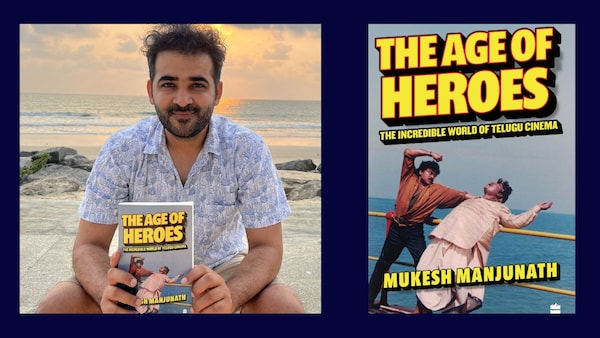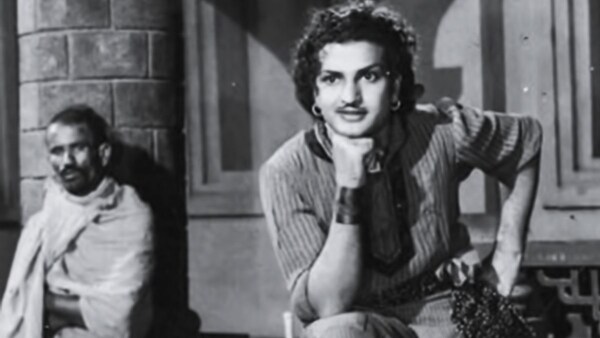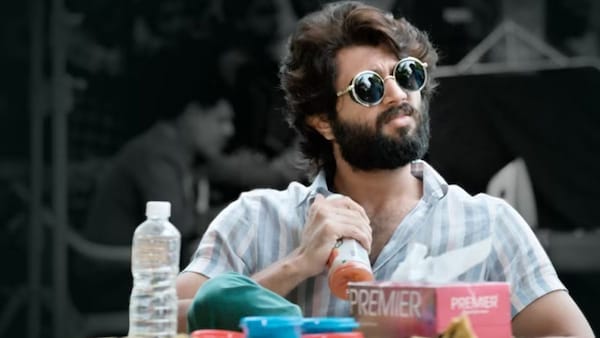The Age Of Heroes Is Writer Mukesh Manjunath's Effusive Love Letter To Telugu Cinema
Mukesh Manjunath’s The Age of Heroes analyses the larger-than-life Telugu superstars' impact on their audiences over the last seven decades.

Last Updated: 05.47 PM, May 29, 2024
NTR, Chiranjeevi, Pawan Kalyan, Mahesh Babu, Vijay Devarakonda.
Any Telugu movie buff worth his/her movie tickets will know that these are just matinee idols, but idols in every sense of the word. Larger-than-life, iconic, and impactful, movie stars in the Telugu states have transformed over time into demigods who have an incredible impact on their audience.
Mukesh Manjunath’s The Age of Heroes analyses these actors' impact on their audiences over the last seven decades. From NTR’s brilliant 1951 Arabian Nights-like fantasy movie Pathaala Bhairavi to Vijayashanti’s hard-hitting turns in movies including Kartavyam and Osey Ramulamma, the writer does not discriminate between actors and actresses, making a case for stars who created a stir with their roles.
For the author, who has been dreaming of writing a book ever since he read Charlie and the Chocolate Factory at school, this is his effusive love letter to Telugu cinema - where movie stars cross over into politics, where they bash up a hundred goons in a thrice, and where they define and dominate the cultural landscape with their swagger onscreen.
A very personal book
Manjunath’s immensely organic relationship with movies is clearly explained at the onset of the book with various impressions from his grandmother, who introduced old Telugu movies, and the impact of watching movies on a single screen in his hometown of Anantapur.
Around 2019–2020, a friend suggested he write a non-fiction book because, he reasoned, in India, the genre sells much easier than fiction. “In that you broadly have five categories—film, politics, history, self-help, and cricket,” the author recalls, “and then I chose the film category because it met the criteria of knowledge about a topic, no death threats involved (hopefully), the freshness of the topic, and the ability to retain personal insights and writing style.”
Given the esoteric topic (how many authors would write about the historical impact of heroes in one movie industry?) Manjunath realised that the best way to gain control over the topic was to make it personal. He explains, “The feeling that ‘hey, a writer is being vulnerable and letting me into personal corners’ means that the reader puts in the effort to overcome the ‘stuff’ that’s not something that interests them.”
The author cites the example of one of his favourite non-fiction books, The Undoing Project by Michael Lewis. He states, “I know nothing about behavioural economics or the psychology behind decision-making. But because we get such intimate details about the friendship between Amos Tversky and Daniel Kahneman, I couldn’t wait to get to the next page or google something I didn’t know.”
It is these personal details that the readers connect with. The easy nostalgia of watching movies in the 80s and 90s: understand the lineage of R. Narayana Murthy’s movies tinged with communism and losing oneself in Chiranjeevi’s adrenalin-fueled action entertainers.

Roots in folktales
The author traces the roots of the current-day Telugu hero to NTR’s turn as the protagonist, Thota Ramudu, in Pathala Bhairavi. “I think it was the first time that a hero was fun. He wasn’t burdened with reforming society. He was also motivated by self-interest, and of course, he’s the underdog because of his class and subtly hinted at caste.” he states and adds, “From burdened protagonists, we get someone who wants to have fun and tries to win the love of his life, and along the way defeats an evil guy, wins a kingdom, and saves his people. He did all the right things without suffering.”
The book also understands the changes in the Telugu hero—to someone who could be both macho and sensitive to the exaggerated hyper-masculinity of the current generation of male superstars. While they always bashed up the villain, they weren’t above shedding a tear with a sibling or giving up a girl they liked, unlike the current crop of stars who are shredded of sensitivity.
Manjunath feels that the answer ‘lies in the changing demographics.’ With the advent of TV, middle-aged women have almost entirely disappeared from cinema halls, and you barely see them in the first week. And now, with phones and social media, it disincentives multiple demographics to come to the theatre in the first few days.
“This means the only demographic that stays is young people, mostly young men. This is why even the cinema has a strong masculine lens but also a boyish understanding of masculinity. Beating up hundreds of people. A validation of aggressive and immature reactions to love. Or the showcasing of complex problems in society as having simplistic and swift solutions,” explains the author.

Evolution of the Hero
The basic essence of the hero, however, has remained the same, from NTR to Vijay Devarakonda, barring a change in appearance and the usage of language. The author opines that, broadly, the Hero still holds the same function in society.
As he notes in his book, one thing that’s gotten worse is the lack of anger with a purpose. Heroes are angrier than ever before, but that anger is never directed at a larger social purpose but more as an attempt to be masculine. Manjunath adds, “One positive change, however, is that Heroes appear less divine, which means that they are more ‘real.’ So heroes don’t appear like Gods in the sky but more like people who want you to like, share, and subscribe.”
The book, divided into easily readable chapters, is at its best while decoding the allure of cinema. It, however, falters in pace right at the end, though it loses none of its charm for it. For the author, the challenge was to articulate his story using memories and emotions and also to keep it light. Finding the right balance in emotions—humour, tragedy, action—and theory—history, names, dates, politics— the author gets it just right by giving us a ringside view of film nostalgia and movie magic.

 Premium
Premium